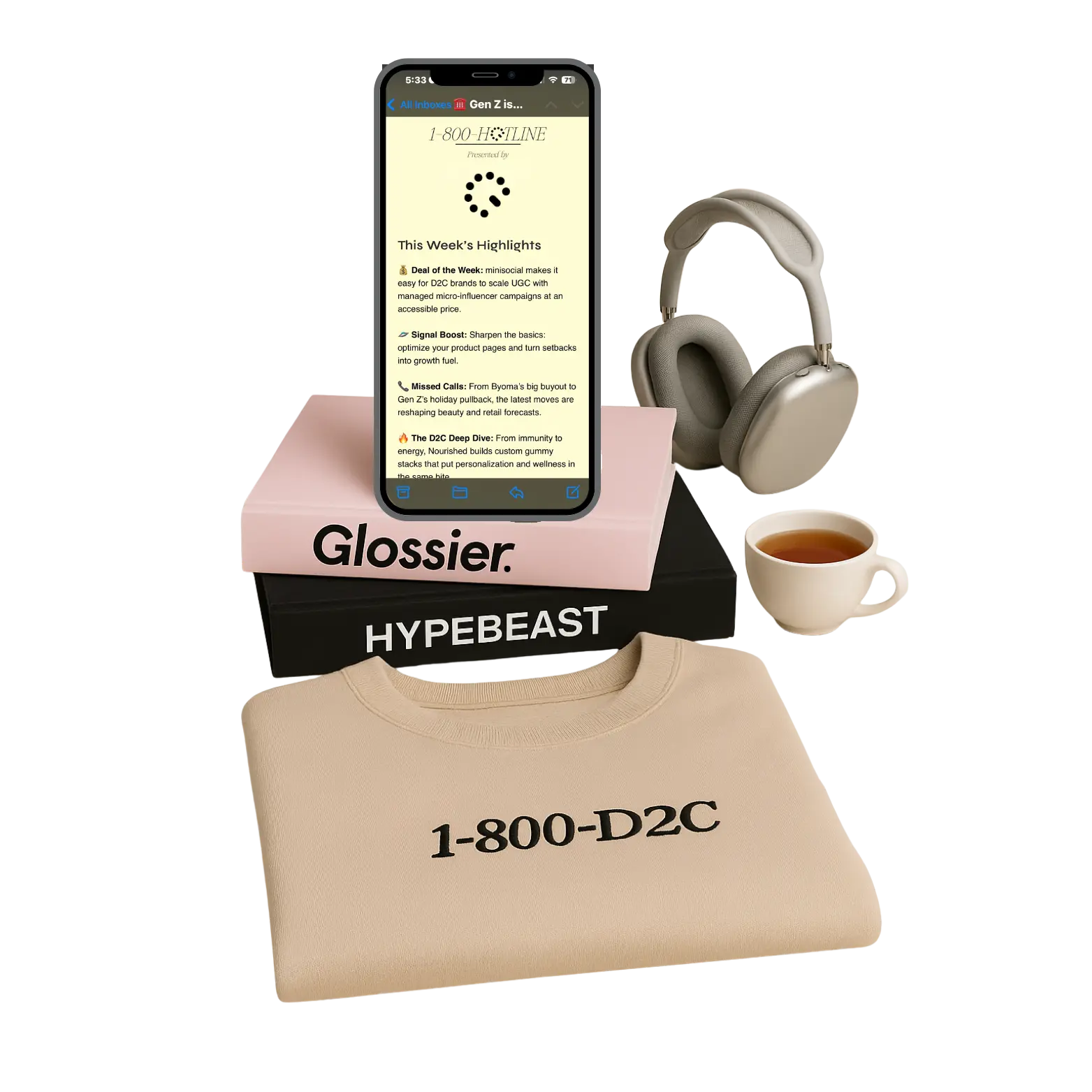
Ben Sharf: I used to be a Division 1 hockey player and had the opportunity to play professionally. I also had the opportunity to go do M&A consulting at one of the Big Four consulting firms. In the end, I turned down both options. I told my corporate job I wasn’t coming 12 hours before my first day. Instead, I ended up joining an early stage COVID testing startup that quickly scaled to $50 million in revenue in just five months. It was there that I met one of my technical co-founders, Kieran, who is still with me today.
Before we started this company, I spent a year working at a company called GoPuff in Philadelphia. That’s where I got my start in the e-commerce world and helped build a business unit called PoweredBy, which was essentially unlocking instant delivery for e-commerce websites. Through the PoweredBy program, I had the opportunity to talk to a bunch of Shopify Brands and people all across the industry. After talking to so many brands, I realized there was an opportunity that existed to help improve how they operate and manage their storefronts. This realization led us to start Platter, which is based on several key insights.
The first insight is that a lot of apps in the Shopify ecosystem are features not products, causing brand owners to pay for too many apps, deal with too many support teams, and have a bloated tech stack, resulting in a slower website experience. The second insight is that non-technical brand owners who enlist development agencies to build their storefront are limited by that agency's abilities and timelines. If you don't know how to make incremental changes to your storefront, that can get very expensive very quickly. The third insight is that we realized that you can productize a large portion of the storefront building and delivery process.
Ben Sharf: Platter is a theme and app bundle designed to build a high converting Shopify store. We provide functionalities from over 40 e-commerce app categories that are built into both the theme and app. With the theme product, Smart Theme, you're getting new wireframes for the storefront that inherit CRO best practices, and all the out of the box functionality built into the solution. Essentially, it's like getting an expensive website at a fraction of the cost and in a much shorter time frame, since we have streamlined the delivery process for creating your live store from scratch.
Our bundle consists of one theme and one app. The reason why we have both is to incorporate specific functionalities into our solution. Some features are too complex to build into the theme layer, which is why we have an accompanying app, Platter+, that works alongside the theme. The benefit for merchants is avoiding the hassle of piecing together 30 different apps. By consolidating these functions into one solution, we can save you incremental time, money, and reduced bloat in your tech stack.

Ben Sharf: There has been a shift in focus towards profitability from the brand's perspective, which aligns nicely with what we are offering. During market downturns, when funding isn’t readily available, it forces brand operators to rethink their strategies and prioritize staying financially stable. For consumer brands, it can be difficult to bootstrap because of the hard costs involved. When you realize dollars to fund your business are harder to come by, you now have to play your hand and think “how can I become more profitable and stay default alive?”.
Then, this shift in thinking prompts you to figure out which tools that you’re using are just nice-to-haves, instead of need-to-haves. It also forces you to think about what incremental improvements and efficiencies you can make in your store or within your internal operations to do more with less. I think the market shift has played very well into our value prop: providing cost savings by unifying your tech stack and improving your operational efficiencies. Our platform also allows non-technical people on your team to make contributions to your storefront, while receiving guidance around best practices for maximizing profits.
Ben Sharf: When brands think about working with software vendors, specifically in the context of CRO (conversion rate optimization), they want proof that you have features and functionality that can either make them more money or save them more money (or ideally, both). I think it's less about qualitative pipe dreams and more about if you can actually move the needle for them. We always talk about whether a feature is a nice-to-have versus a need-to-have, and tying it back to data to prove that it works.
So, one example of this is our core belief that our product can power growth through things like gamification. We know it to be true that if you gamify the shopping experience, you're gonna get the customer to spend more dollars. And we have the case studies and data to prove it.
The second thing we have learned from our brands is to play as close to the money as possible. That means functionality within the cart, right before the point of purchase, during the checkout experience, and post-checkout – because those are areas that are very directly tied to actually making a sale and generating revenue as a brand owner. I believe optimizing our time to value in the eyes of our merchants is most important at the moment.

Platter is a tech-enabled agency that helps Shopify bands build storefronts that make more money. Unlike traditional design & development agencies, Platter utilized its world-class in-house theme to build storefronts that convert better, are easier to manage, and cost less to maintain. Currently powering 150+ of the fastest growing brands, including Ministry of Supply, Gainful, Wild Earth, Neuro Gum, and more.

Ben Sharf: The first one would be to make sure your information hierarchy is very clear. We always talk about how every brand should be using a mega menu that leverages your assets to actually guide the consumer to where you want them to go. The way that I always describe it is that people are lazy – so don't force them to think. Hold their hand and take them where you want them to go.
The second one is to use a cart drawer. Any brands in 2024 that are forcing a page load for their checkout and cart experience are just missing the wave and leaving money on the table. Generally speaking, if you can reduce the number of clicks in the conversion funnel, you're likely going to see an increase in conversion. I think the cart drawer is a low-liftway to see high impact, because it streamlines the shopping funnel so much.
The third thing I'll add is to integrate gamification into your storefront, which can be through incentive bars or gamified bundle builders.Make the consumer feel like they're earning something by spending more. There's a lot of psychology that goes into the way shoppers behave on your storefront.
To bring that all together, if you can simplify the shopping experience, if you can make it easier and guide them to check out and spend money, gamifying along the way, you're probably going to see an uptick in your core metrics.
Ben Sharf: I think the way that we look at it is a simple math equation to answer “how much value are brands getting for this? How much money are they paying to get that value?”. If the value always exceeds the costs, then I think you're doing right by the merchants and you're not giving them a valid reason to say no and walk away from you. For us, we want to provide so much value for such a small cost on a relative basis that it's hard for you to just not use our solution over the alternative options.
Ben Sharf: That's a great question. I would say we help them solve the pain point of getting customers from first click all the way to purchase. In doing so, we maximize the amount of things they buy along the way.
Ben Sharf: Listening to our customer. We operate under the notion that there’s a huge difference between knowledge and belief. -It’s the difference between thinking we know what we should build versus actually talking to our customers and hearing what they want us to build. Our ability to talk to customers and iterate accordingly has been the key to our ongoing success, and it's something that we can't lose sight of as we grow.

Discover new D2C brands, new eCommerce tools and read in-depth founder reviews each week.
